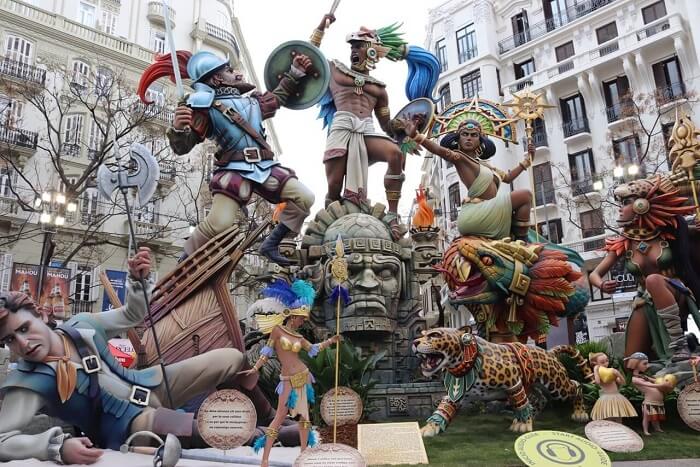What is Fallas de Valencia Festival and when is Fallas de Valencia Festival? Information about the importance, meaning, traditions, history of Fallas de Valencia Festival.

Source: wikipedia.org
Fallas de Valencia Festival
Fallas de Valencia is a traditional festival that takes place in the city of Valencia, Spain, every year from March 15 to March 19. The festival celebrates the arrival of spring and honors Saint Joseph, the patron saint of carpenters. It is a week-long celebration that includes parades, fireworks, and the construction and burning of elaborate sculptures.
The festival begins with La Plantà, the construction of large, intricate sculptures made of papier-mâché, wood, and other materials. These sculptures, called fallas, are often satirical or political in nature and can reach heights of up to 20 meters. The fallas are displayed throughout the city and can be seen in public squares and streets.
On March 19, the final day of the festival, the fallas are burned in a spectacular event called La Cremà. The burning of the fallas symbolizes the end of the festival and the renewal of life for the coming spring. The burning is preceded by a firework display that lights up the night sky over Valencia.
The festival also includes other events such as parades, bullfighting, and street performances. The most important parade is La Ofrenda, where thousands of people dress up in traditional costumes and offer flowers to the statue of the Virgin Mary.
Fallas de Valencia is a popular event that attracts visitors from all over the world. It is a time of celebration, joy, and tradition in Valencia, and it is a must-see event for anyone interested in Spanish culture.
History
The history of Fallas de Valencia dates back to the Middle Ages, when carpenters would celebrate the feast day of Saint Joseph, their patron saint, by burning scraps of wood and other materials in the streets. Over time, the celebration grew in popularity and became more elaborate.
In the 18th century, the fallas sculptures were introduced, and the festival became more organized with the creation of committees to oversee the construction and burning of the sculptures. In the 19th century, the festival became more political, with the sculptures often satirizing politicians and public figures.
In the early 20th century, Fallas de Valencia became more of a tourist attraction, and the festival began to incorporate elements of music, dance, and parades. During the Spanish Civil War, the festival was suspended, but it was revived in 1940 and has been celebrated every year since then.
Today, Fallas de Valencia is a major cultural event and a symbol of Valencia’s history and traditions. The festival has evolved over the years, but it remains a celebration of spring, art, and community that brings people together from all over the world.